A day in the life of professional food photographer Donna Crous
Donna cooks and captures her own creations at home. We drop by to get a flavor ahead of our appearance at The Photography Show
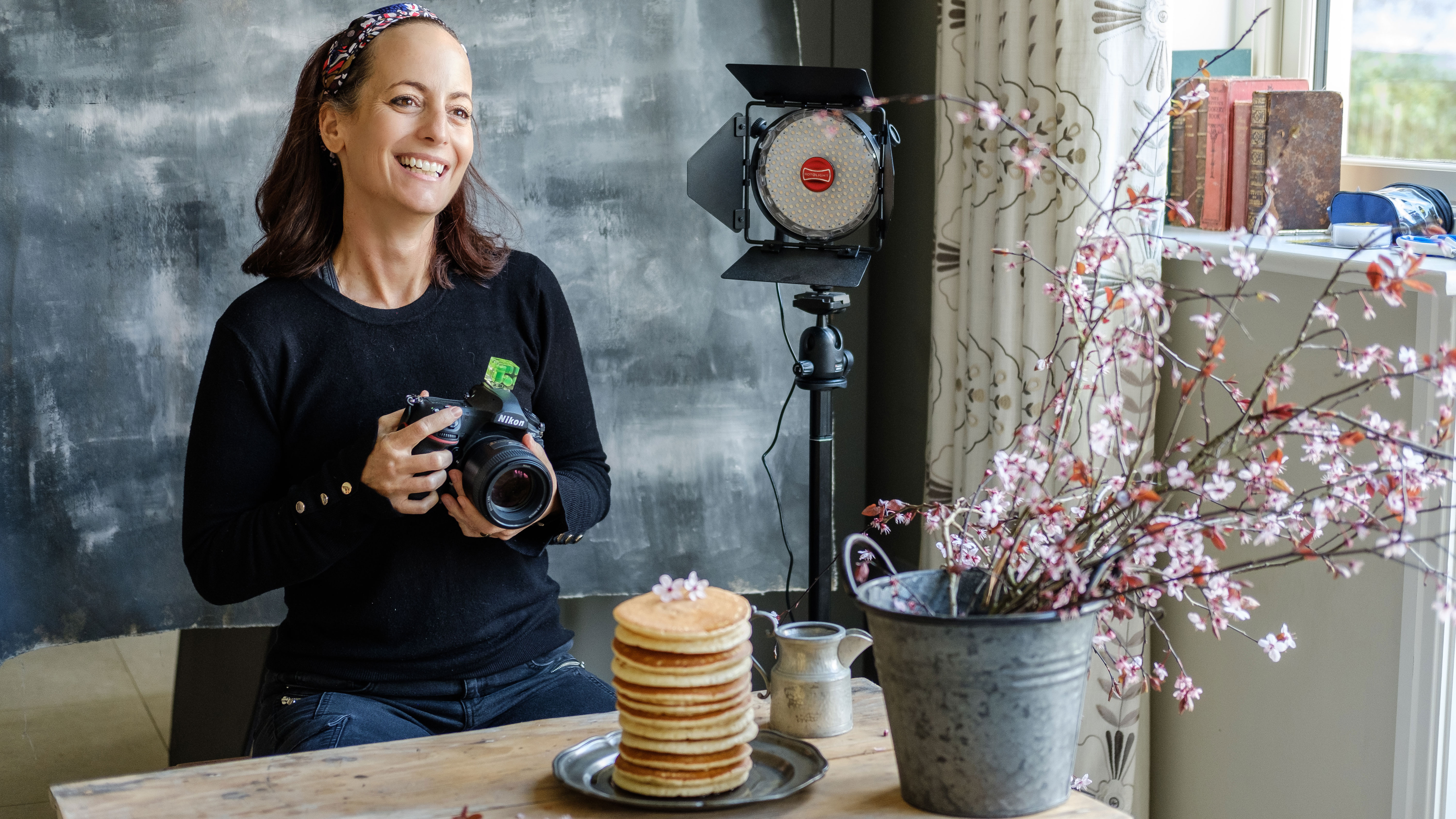
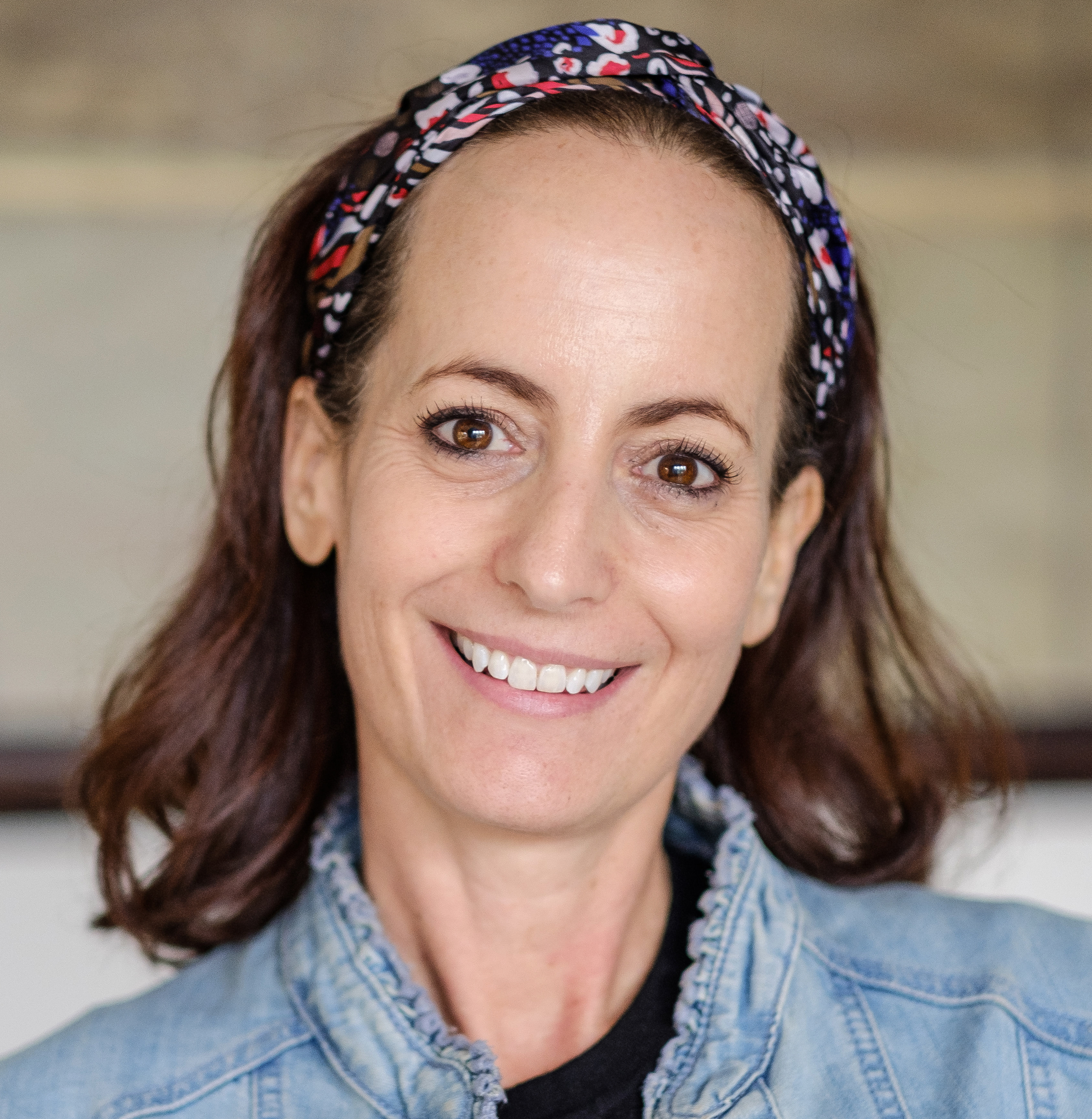
You can see and hear Donna at The Photography Show & The Video Show Virtual Festival taking place on 20-21 September. The two day event will have over 100 free talks online.
Donna Crous will be talking about food photography and about being a pro photographer at five different sessions during the show.
Photographing food is becoming more and more popular. Whether it’s snapped on a phone or captured by a camera, it’s a fun entrée to mastering composition and lighting techniques – two essential ingredients of still-life photography.
And while a keen enthusiast can get great results with a basic camera setup, it’s genuinely fascinating to see how a professional food photographer approaches a shoot.
• More photography tips • Food photography tips and techniques
So just how much work needs to go into turning an attractive-looking
dish into a fine-art photograph?
Thanks to spending a day with Donna Crous, we’re about to find out. Donna’s career has risen like a soufflé since making it to the finals of Pink Lady Food Photographer of the Year in 2017.
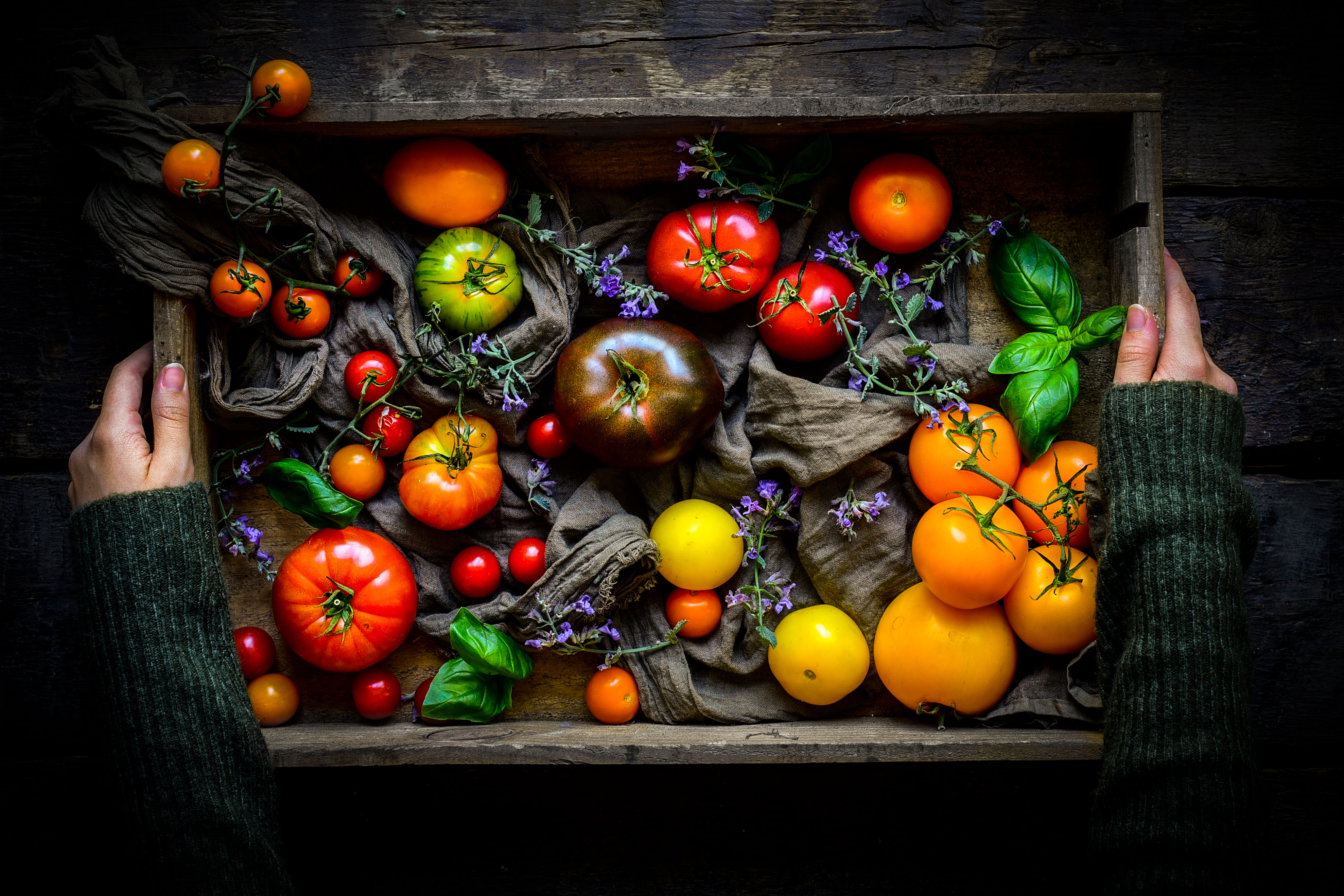
Donna's distinctive style is built around rich-colored dishes served in artisan receptacles that pop from rustic backdrops, augmented by creative uses of shadow.
Viewing the images on Donna’s website and Instagram feed, it’s tempting to think that she puts all this together in a $500-a-day-plus studio. In reality, it’s all shot in her house in the home counties of England, UK.
Get the Digital Camera World Newsletter
The best camera deals, reviews, product advice, and unmissable photography news, direct to your inbox!
There’s a very good reason for doing this: unlike some food photographers, Donna actually cooks and styles the dishes she shoots, so she needs close proximity to a kitchen.
This also means that she has complete control of the creative process: before she even buys any ingredients to make a given recipe, Donna has already thought how it’s going to be photographed and what kind of look she’s trying to achieve.
Although she favors natural light for her photography, Donna has also incorporated a Rotolight Neo 2 into her current setup. This allows her to balance changes in ambient light levels, and to pick out individual elements of the food and make them come to life.
From food blogger to food photographer
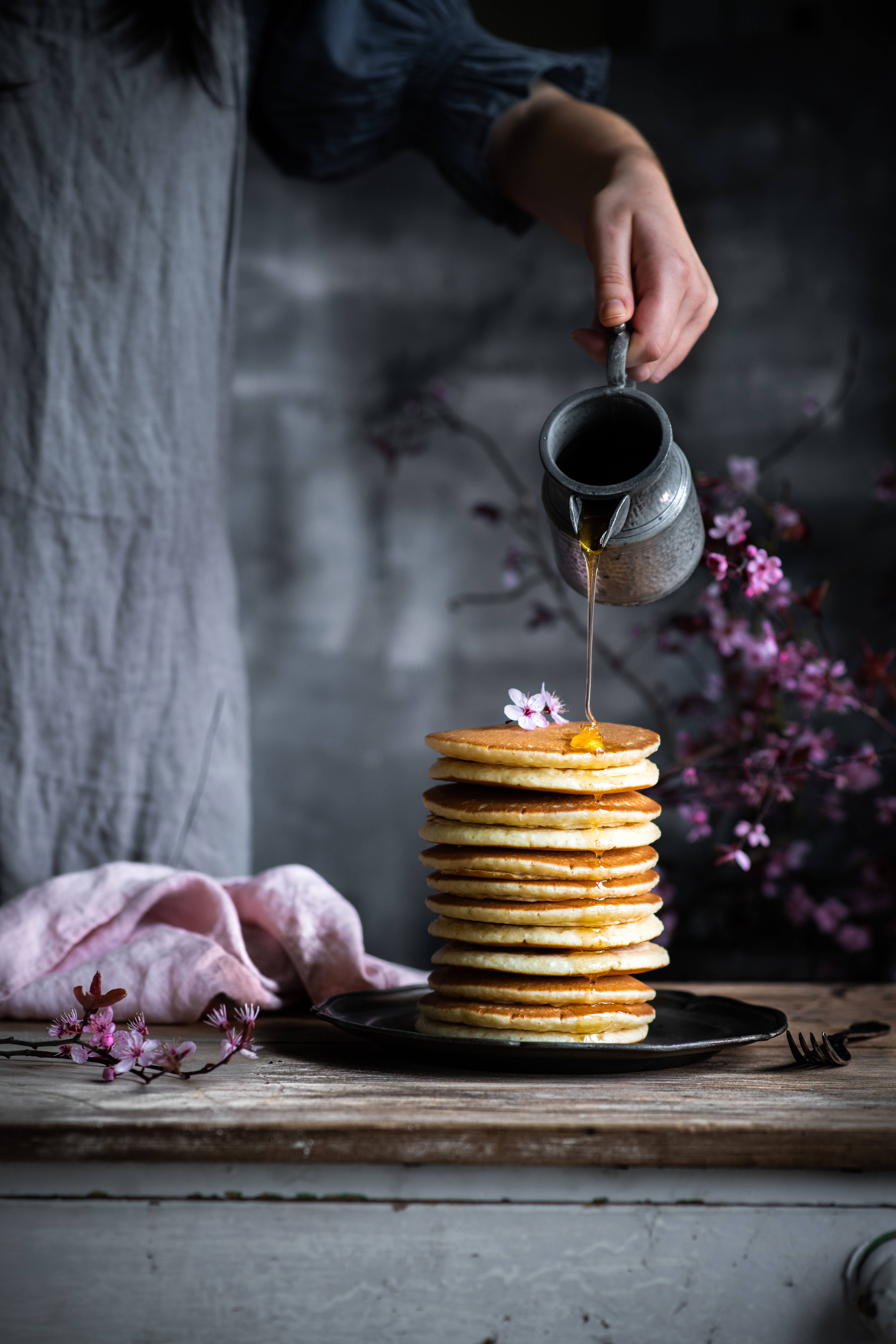
Before turning to photography, Donna blogged about healthy and natural whole foods, and this continues to be a big part of her work.
She is a keen advocate of the Paleo diet (eating a balance of nutritionally dense foods in their natural state), and has photographed recipes for four books published by the US-based Page Street Publishing Co, including No-Thaw Paleo Cooking, Paleo Cooking with your Air Fryer and Keto Cooking with your Instant Pot.
Whether Paleo or non-Paleo, Donna makes all the food she photographs from scratch. For recipe books, she will work from a proof copy, and also follow a shot list if supplied.
“This sets out if anything specific is needed,” she says, “for example what angle the food needs to be shot from.
As the images are used in a book, everything has to be in portrait orientation, with the occasional landscape image if a photo has to run over a whole spread.”
Publishing deadlines mean that Donna has to be very efficient. She tries to cook and photograph four or five recipes a day; certainly a minimum of two.
“A book can take two months, but most of them I’ve done in one month. For one book, I had to cook and shoot 75 dishes plus some additional shots.
“As the books are written for an American audience, some of the ingredients are exotic and I have to go to London to get them. Things like coleslaw may have to be freshly made.”
For our purposes today, though, the only cooking Donna is doing is a delicious roast chicken lunch.
Behind the scenes on a food shoot
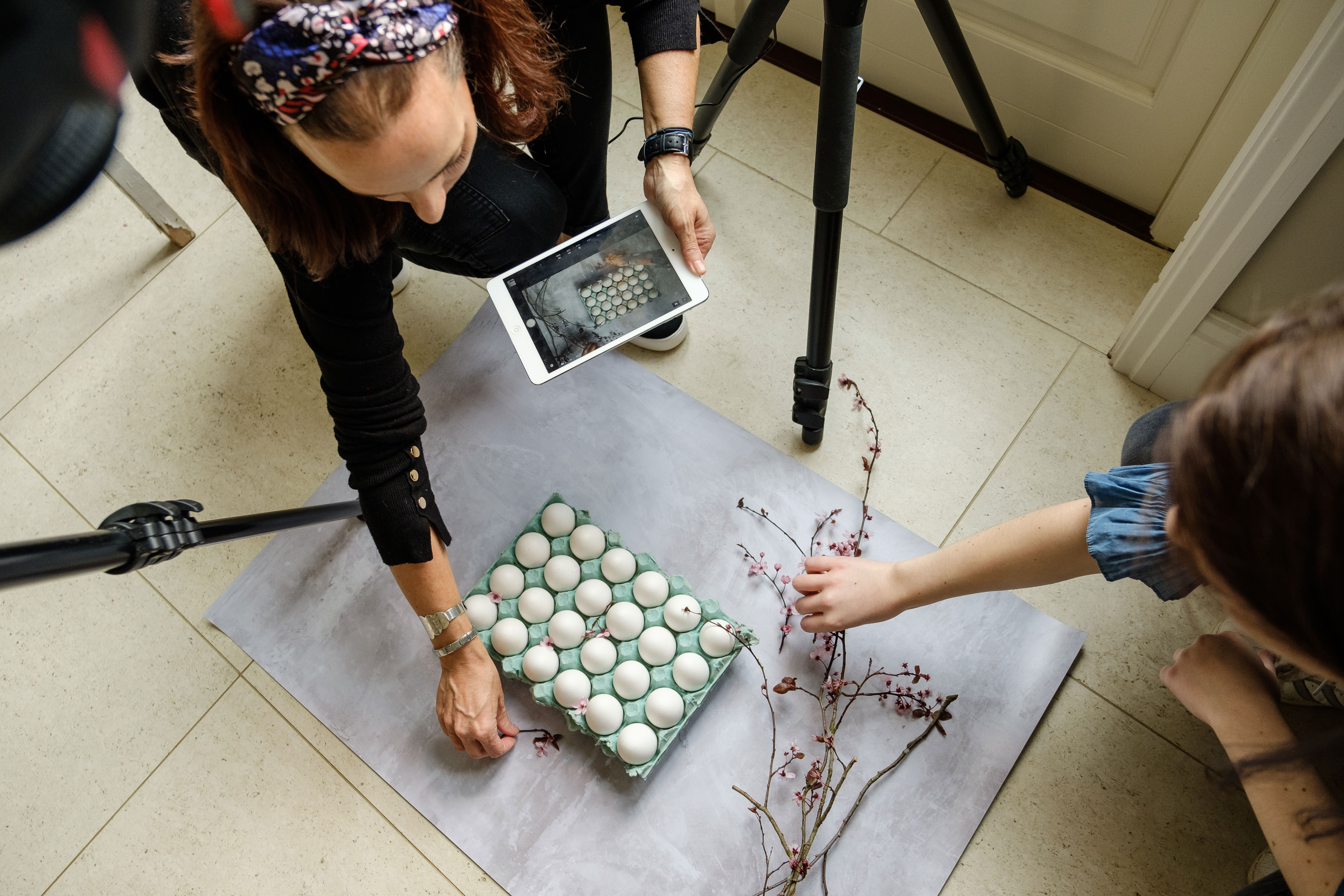
To get things under way, Donna starts with a ‘flat lay’ setup, comprising a tray of eggs next to a bowl of flour, standing on a Capture By Lucy backdrop.
Daughter Gemma is on hand to help with the styling, dressing the scene with flowers and a cloth (fabric is good for adding texture and light), and precisely arranging the flour around the egg using a brush.
This is taken from a make-up box that contains a selection of essentials for food photography: foam wedges, masking tape, scissors, string and window cleaning wipes.
“For a flat lay, the light needs to come in from 45 degrees so it casts a small shadow,” says Donna.
“There’s a misconception about shadows: some people try to get rid of them, but they’re important for food photography – they make 2D into 3D, so we need them.”
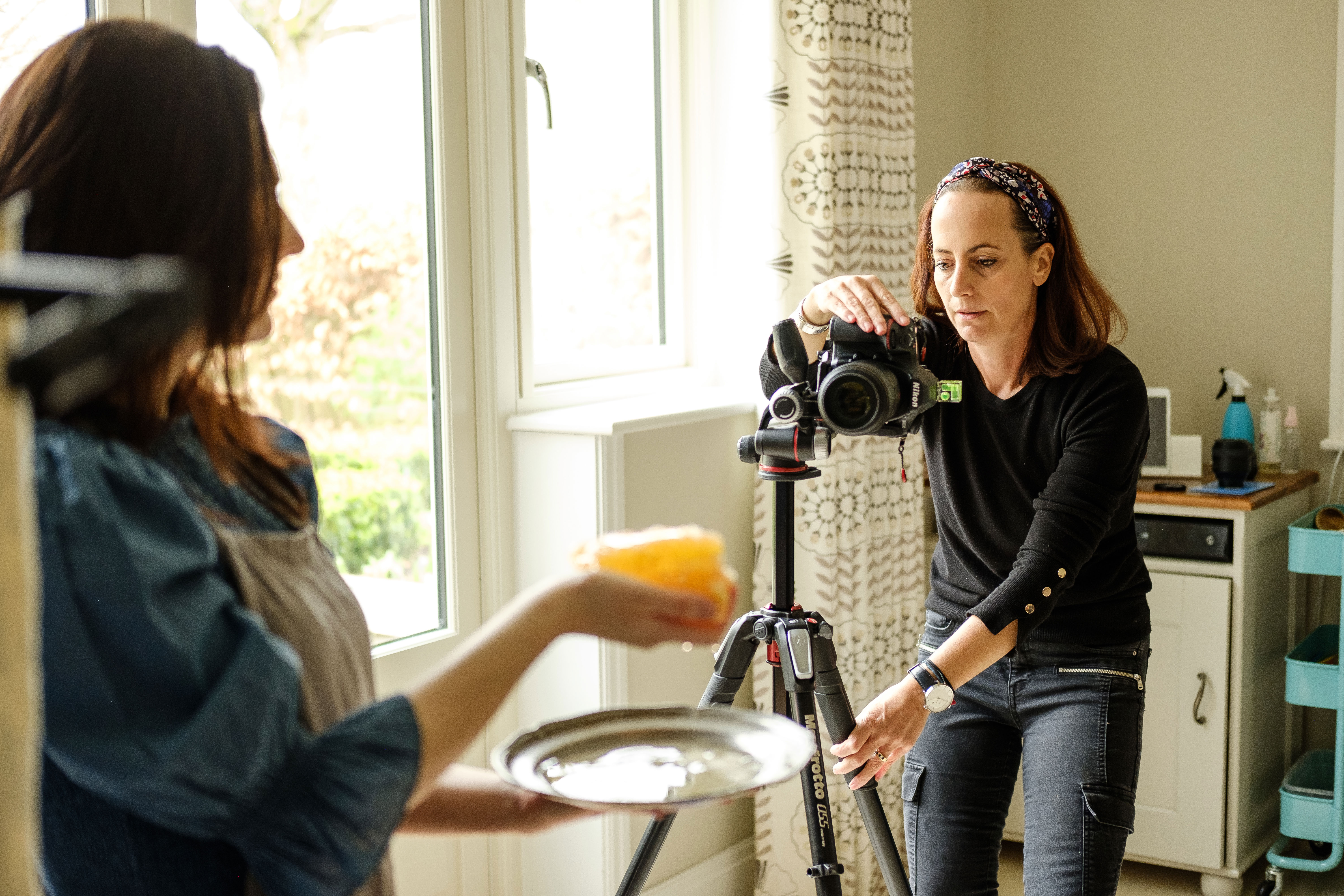
The light coming in through the French doors is the main illumination, augmented by a Rotolight Neo 2 on 10% power and modified by a pop-out diffuser.
Donna mounts her camera on her tripod’s horizontal arm to get right above the scene, and uses a hotshoe spirit level to check her alignment: “It’s imperative to keep things level,” she says.
For her next shot, of Gemma clapping with hands full of flour, Donna switches to her 105mm lens, before trying a variation with her 50mm lens.
Gemma claps upwards to exaggerate the clapping movement, and Donna fires a burst using continuous frame advance.
Then, against the same backdrop (which Donna painted herself) Gemma pours honey from a jug onto a plate of pancakes.
Rustic props like this are a key part of Donna’s visual aesthetic. “My images have a homely, country kind of feel that people can connect with,” she notes, with French flea markets being a favorite source for prop buying.
Prop size should match the volume of food
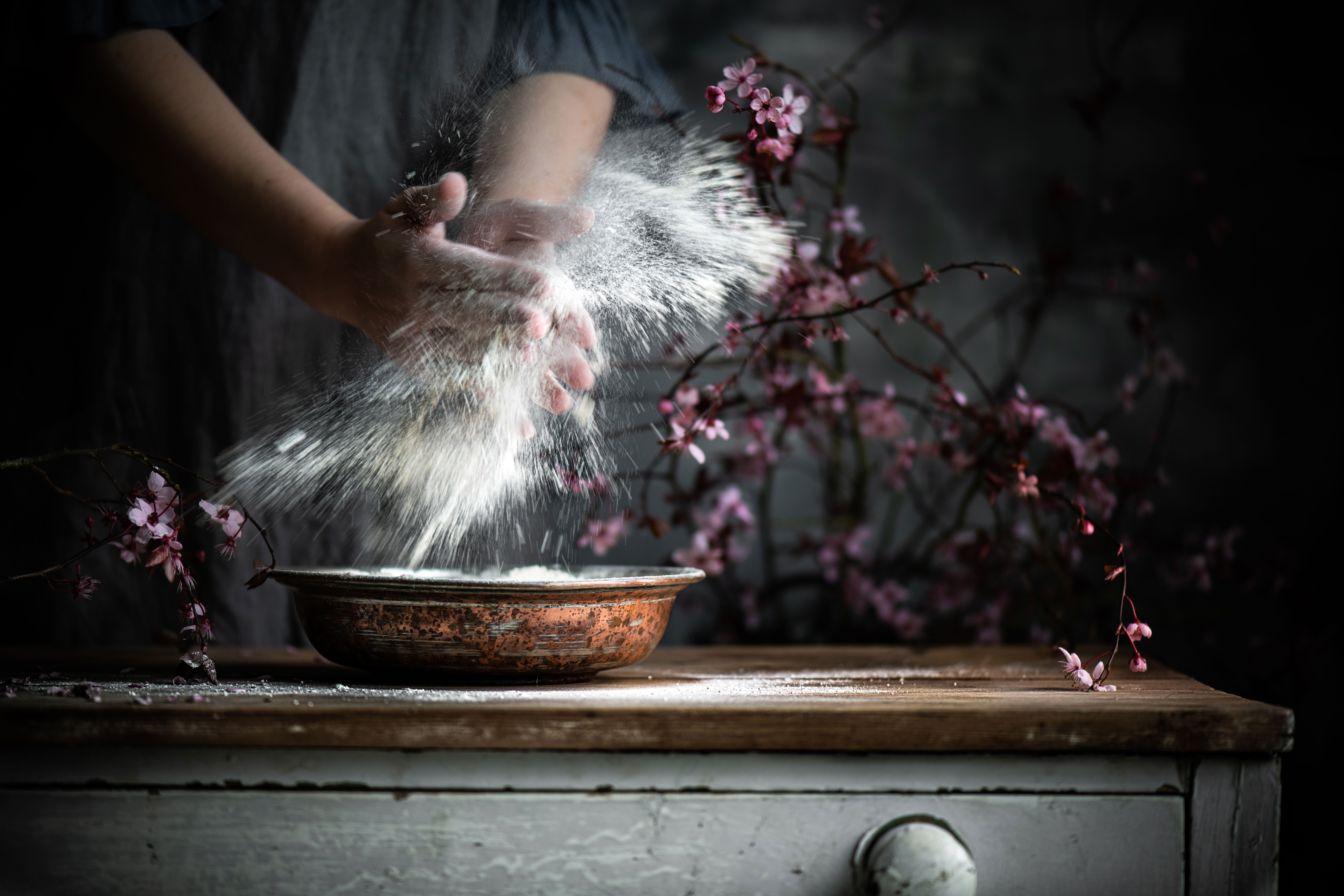
In a pro tip that every newcomer to food photography needs to know, the size of props should relate to the volume of food: “Dinner plates can look too big, so use a sideplate instead.”
And context matters, too: “Don’t use a teapot when you’re shooting curry dishes.”
As Donna wants the food to be the hero of the image, rather than Gemma, she focuses on the point where the honey comes into contact with the pancake.
Although this shot has required meticulous preparation, Donna has to photograph it quickly – the honey doesn’t take long to get absorbed by the pancakes, which will cause the resulting image to have more gloop than desired.
For a different look, and the final shot, Gemma holds a dripping honeycomb over a sideplate. Using the Rotolight as a fill light, Donna sets its color temperature to 4,100K to balance the yellow cast of the natural light and Gemma’s blue clothes.
“Perfect – the Rotolight just pops the highlights and makes the shot,” smiles Donna.
And that’s a wrap. Pancake, anyone?

Kit that Donna Crous uses for food photography
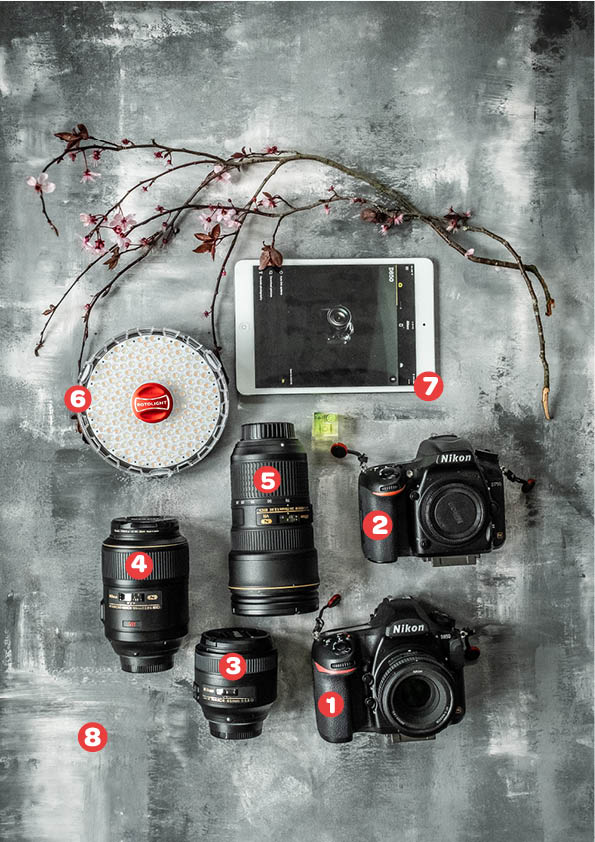
1. Nikon D850. “This camera’s pixel size is ideal for my work,” says Donna. “I’ve been using it for about a year and a half.”
2. Nikon D750 . “This is a backup body now, or my daughter Gemma will use it as a second camera.”
3. Nikkor 50mm f/1.8. “If you need one lens for food photography, this is it. This focal length is perfect.”
4. Nikkor 105mm f/2.8. “As well as being great for close-up and macro shots, you get excellent optical compression when shooting from further away.”
5. Nikkor 24-70mm f/2.8 VR. “I don’t use this for studio work. It’s ideal for location shooting, as I don’t want to carry a lot of kit when I’m travelling. It has Vibration Reduction, because it’s heavy, and I’m quite small!”
6. Rotolight Neo 2. “This is perfect for shooting on overcast dull days, and for creating highlights in liquids separation in slower-speed particle shots, and pouring shots.” Donna sets the colour temperature between 4,100K and 5,600K, depending on the sources of light.”
7. Apple iPad mini. “Nikon’s SnapBridge turns an iPad into a remote camera control and gives you a big live view of the image. As you can view shots next to each other, it’s good for reference. Plus, it allows me to work on my own without an assistant – a lot of my photos have me in them, pouring things.”
8. Capture By Lucy photo background. “These help me to achieve my individual look. I have at least 30 of them, in a wide range of designs.”
• Best backdrops for photography
Donna Crous's top tips

Read Donna’s top tips for styling, lighting and capturing tasty cuisine every time…
- “Be aware of your lighting: a good image has a balance of shadows, midtones and highlights.”
- “When styling a scene, take the direction of shadows into account when balancing the composition. Always use side or back lighting, and don’t have the light source in the same direction as the camera as the food will look flat and unappetizing. And never use in-built flash.”
- “Light is not static – it’s always moving and changing. Be constantly aware of how the light is changing and tweak it: either add more filler light, bounce cards or diffusers.”
- “Learn to control depth of field. Make sure you understand the depth of field characteristics of a given lens.”
- “Using a tripod means you won’t have to worry about shutter speed and ISO values, and will allow you to capture beautifully sharp pictures. You can also keep the camera in the same position when you need your hands free to change things. Tripods with horizontal arms are really helpful for getting overhead shots.”
- “Have the scene ready and set up before adding the food. If the food spoils quickly, like ice cream, use a stand-in food to test before shooting the real thing.”
Read more: `
The best lenses for shooting food photography
The best books about food photography
Best camera for food photography
How to edit images of food
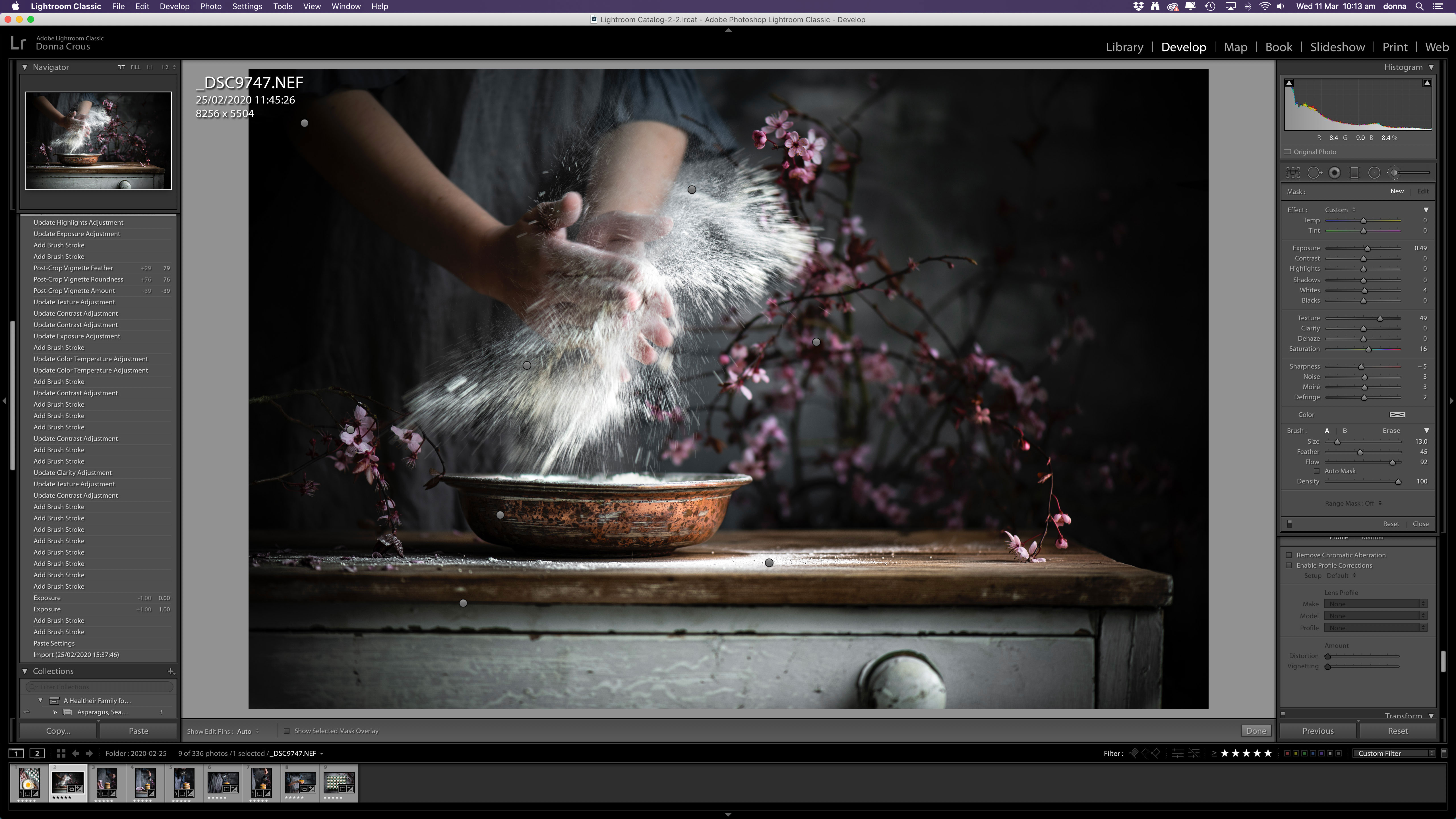
“Using Lightroom, I’ll increase Contrast and Vibrance over the whole image, but never Saturation. I lighten the food using the Adjustment Brush, and add Saturation if needed.
“For wooden surfaces, I will increase Contrast, Texture and Clarity to bring out the grain – again, using the brush.
“If the wood has picked up yellow or blue tints, I can drop the Saturation to push it back. And I always finish off by adding a vignette.”

Read more
• A day in the life of professional car photographer Amy Shore
• A day in the life of professional bird photography Tesni Ward
• A day in the life of professional landscapes photographer Jim Cossey
• A day in the life of astrophotographer Alyn Wallace
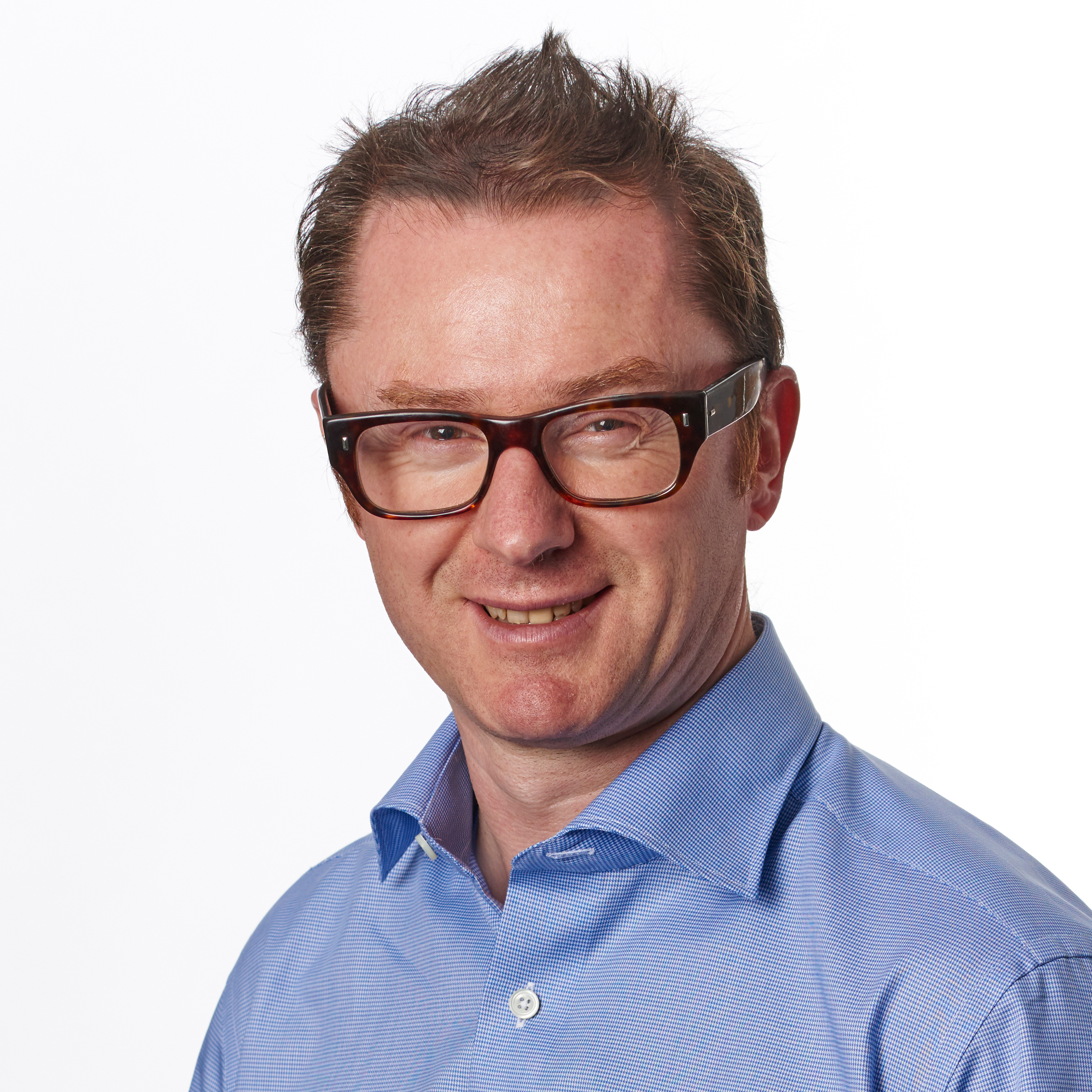
Niall is the editor of Digital Camera Magazine, and has been shooting on interchangeable lens cameras for over 20 years, and on various point-and-shoot models for years before that.
Working alongside professional photographers for many years as a jobbing journalist gave Niall the curiosity to also start working on the other side of the lens. These days his favored shooting subjects include wildlife, travel and street photography, and he also enjoys dabbling with studio still life.
On the site you will see him writing photographer profiles, asking questions for Q&As and interviews, reporting on the latest and most noteworthy photography competitions, and sharing his knowledge on website building.
